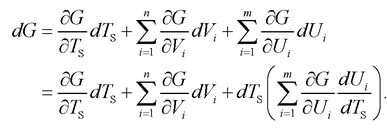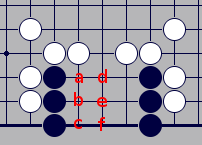| Online: | |
| Visits: | |
| Stories: |

| Story Views | |
| Now: | |
| Last Hour: | |
| Last 24 Hours: | |
| Total: | |
Force F from outer space [Stoat]
 Most normal people would have been content to have produced one game-changing theory of climate but David Evans is not a normal person. No! He has squillions of degrees from Really Prestigious universities and has, on his own, invented entire new types of Fourier analysis. So it is with no surprise – rather, with a dull grey sense of the inevitable – that I note (thank you JM and ATTP) that his latest theory has thunked onto the doormat like junk mail. ATTP attempts to make some sense of DE’s confusion over partial derivatives – they’re the work of the devil I tell you – and I’ll try to point out the more obvious errors in New Science 7: Rerouting Feedback in Climate Models.
Most normal people would have been content to have produced one game-changing theory of climate but David Evans is not a normal person. No! He has squillions of degrees from Really Prestigious universities and has, on his own, invented entire new types of Fourier analysis. So it is with no surprise – rather, with a dull grey sense of the inevitable – that I note (thank you JM and ATTP) that his latest theory has thunked onto the doormat like junk mail. ATTP attempts to make some sense of DE’s confusion over partial derivatives – they’re the work of the devil I tell you – and I’ll try to point out the more obvious errors in New Science 7: Rerouting Feedback in Climate Models.
Let’s start with the first sentence: All the establishment models assume carbon dioxide warms the sky, which leads to the surface warming. Which is wrong. To be fair, those aren’t the brilliant DE’s words, they come from the only-somewhat-less-brilliant-as-the-moon-is-outshone-by-the-sun Jo Nova as an intro. In this case she it is not entirely clear that she has parsed correctly, because the actual article starts In post 5 we noted that the architecture of the conventional model only allows feedbacks that are responses to surface warming, thereby omitting any feedbacks that are primarily in response to climate drivers. So whether their nonsense is upside down or not I don’t know, but either way up its just wrong. So I suppose I need to read part 5. Which contains stuff like The conventional basic model assumes, is built on the idea that nothing causes changes to Earth’s climate unless it works through surface heating — and the GCMs have the same architecture. Cloud cover does not change ice cover. Ocean currents don’t change cloud cover. Changes in biology don’t change clouds. Only changes in surface temperature changes cloud cover. This is so wrong its hard to know where to start. He continues When feedbacks were introduced to the conventional model (see post 3), they are applied to the surface temperature but not the climate drivers so I suppose I need to read part 3. They are very proud of part 3: A feast. A feast! For those who want the meat, the math and the diagrams says JN; Here is the conventional basic climate model, in full says DE. And its all very sad. And I really do mean that. In the sense I’ve tried to explain at “Dr” Roy Spencer is sad and lonely and wrong. These are intelligent people saying very silly things, because they have no-one to talk to who has a clue. And the reason they don’t talk to people who have a clue is (a) because they’ve alienated all such; and (b) they would refuse to talk to them if offered the chance. DE wants to talk about G = (absorbed solar radiation) – (outgoing longwave radiation), which is dead exciting, and he puts up an equation.
 Isn’t it a nice equation? Its got partial derivatives ‘n’ all. Probably, its part of his partial derivative confusion. But, its got nothing at all to do with how GCMs work. So I don’t think there’s any point going any further with the wrongness; I’ll attempt to explain The Truth and see if it helps; because likely other people don’t understand this either. I find I’ve touched on this before – in 2013 – but didn’t really make it clear, unless you already know it. So I’ll try harder.
Isn’t it a nice equation? Its got partial derivatives ‘n’ all. Probably, its part of his partial derivative confusion. But, its got nothing at all to do with how GCMs work. So I don’t think there’s any point going any further with the wrongness; I’ll attempt to explain The Truth and see if it helps; because likely other people don’t understand this either. I find I’ve touched on this before – in 2013 – but didn’t really make it clear, unless you already know it. So I’ll try harder.
Emergent versus imposed properties
 An example, from the game of Go, on the off chance that you play it so might understand. In Go, you place stones on the board and try to surround territory, and kill your opponents stones. A group of stones can be finally killed – notice that I’ve elided detail there – when the stones forming the group have no liberties left. This leads to the concept of a group being “alive” when it has two “eyes” – non-removable internal liberties. Lots of play, and lots of the fighting, centers around forming or removing eyes. You would be hard pressed to understand any game without understanding the concept. But “eyes” don’t exist in the rules. It is, instead, an emergent property.
An example, from the game of Go, on the off chance that you play it so might understand. In Go, you place stones on the board and try to surround territory, and kill your opponents stones. A group of stones can be finally killed – notice that I’ve elided detail there – when the stones forming the group have no liberties left. This leads to the concept of a group being “alive” when it has two “eyes” – non-removable internal liberties. Lots of play, and lots of the fighting, centers around forming or removing eyes. You would be hard pressed to understand any game without understanding the concept. But “eyes” don’t exist in the rules. It is, instead, an emergent property.
Similarly, “climate sensitivity” doesn’t exist in the coupled atmosphere-ocean GCMs that everyone thinks of as “the IPCC models”. It is a useful concept, it can be derived from model output, but its not part of the models2. Nor, indeed, is the balance between incident and outgoing radiation3. There is nothing like DE’s “G” in the AOGCMs. Things like climate sensitivity do exist in the highly simplified models that are tuned to the GCM outputs and used to run some sensitivity tests – but these aren’t the things that people think about when they talk about “the conventional basic climate model”.
So what does happen in yer AOGCM when you “increase the CO2”? Obviously, a massively complicated chain of complicated things, but I’ll attempt a massive oversimplification below. Some of which I understand. For the sake of simplicity, let us say that we suddenly double the CO2. In which case, all the way through the atmosphere, the radiation calculations change. It is tempting to say “and so the previous equilibrium is disturbed” but even that isn’t true. The model isn’t in equilibrium, except in “dynamic equilibrium”. Apart from anything else, there’s always the day-night cycle going on; and if you got rid of that, the atmospheric flow isn’t in stable equilibrium, only in dynamic equilibrium. Cast all that aside for the moment. Suddenly, there is more CO2, which means that the atmosphere (a) absorbs more long wave radiation (differently, in the multiple bands of LW that it uses) and (b) emits (ditto) more LW radiation. Exactly how that works out – in terms of different layers warming or cooling – is not entirely obvious, as the many attempts to explain stratospheric cooling witness. This happens throughout the model layers, and across the globe, everywhere differently, in terms of latitude and longitude. This will over time affect whether clouds form, the overall circulation patterns, the temperature of the surface, and all kids of everything in a pattern that lots of people have spent lots of time and papers trying to reduce into a comprehensible form.
So to return to the first sentence, no the models don’t assume that CO2 warms the sky. The models implement some basic radiation physics that says that changing the atmospheric composition affects how it absorbs and emits radiation at different frequencies; but after that its left up to the implementation of the physics to determine warming or cooling. And as we all know, the stratosphere cools under GW, so the first quoted sentence is wrong even on its own wrong terms. The third quoted sentence from DE is more in not-even-wrong territory, and is clearly just junk.
Notes
1. Yes, “F” does indeed stand for Fuckwit.
2. Actually, its not quite as simple as that. Climate sensitivity doesn’t exist as a variable or equation in the AOGCM models, but people do examine the models carefully for what the derived CS is. Quite how much the models are tuned to a desired or acceptable CS is a bit of an open question (insert appropriate link here; I’m pretty sure JA has ranted about this, but can’t find it right now). And if you do decide to change your model’s CS its not a simple matter of turning a knob; you end up fiddling with a bunch of stuff you decide you might have got wrong, and re-running it to see if that made a difference.
3 In the sense that there is no overall equation for this balance. Of course, it is a fundamental concept, and a model that doesn’t “balance” in equilibrium wouldn’t be much use. But that balance is made up of countless tiny little interactions.
Source: http://scienceblogs.com/stoat/2015/10/04/force-f-from-outer-space/



